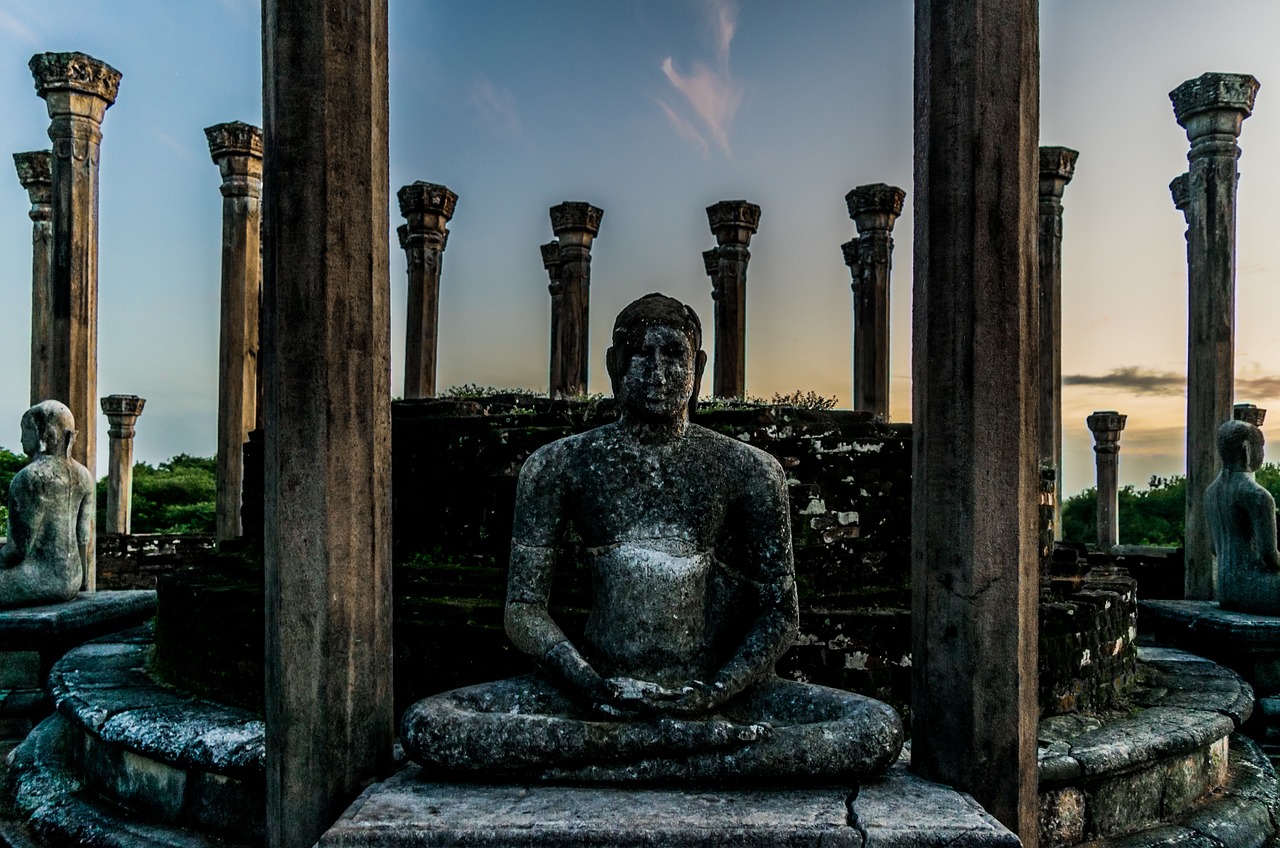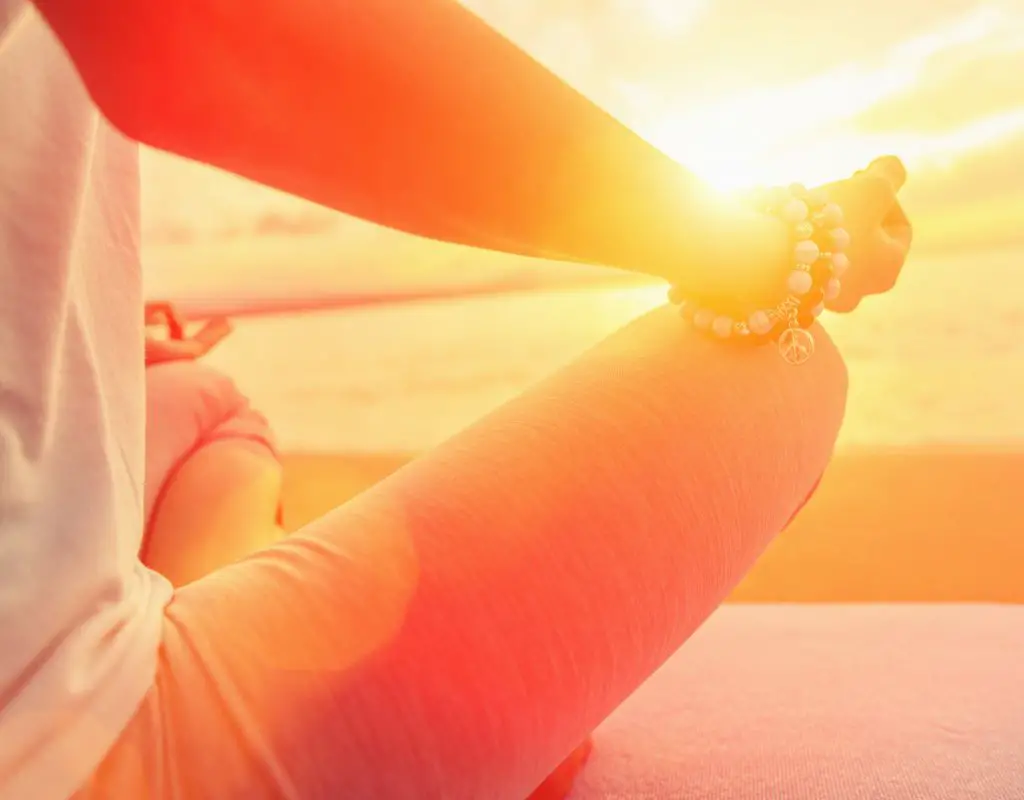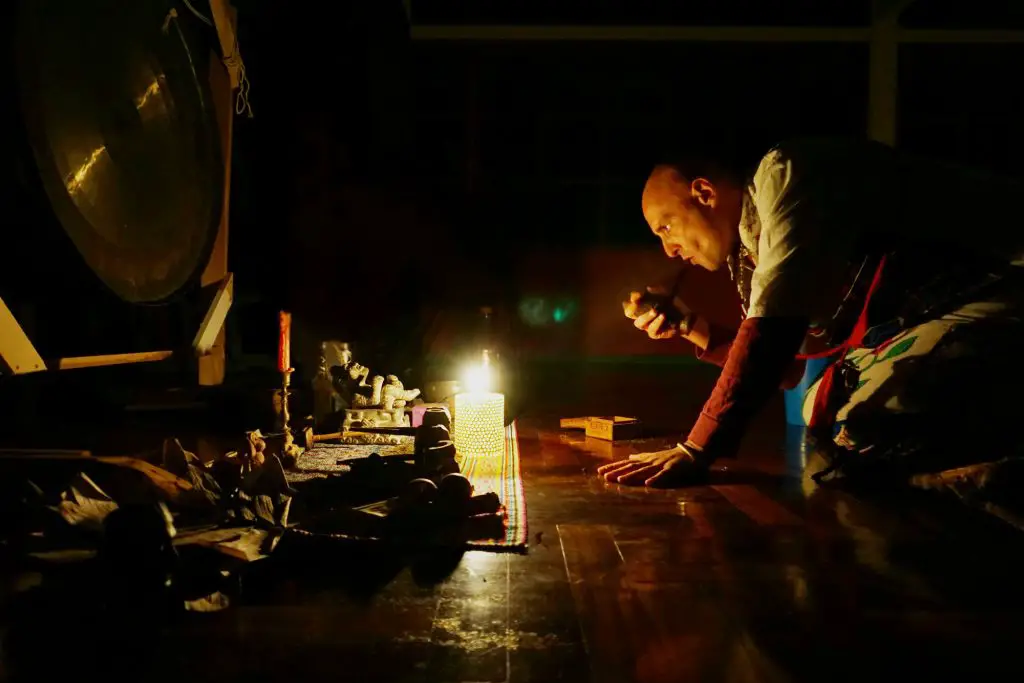Originally Sourced From https://www.thelawofattraction.com/mindfulness/
Mindfulness is a popular pursuit, and you probably know some people who swear by it. According to its advocates, mindfulness can not only help you deal with difficult emotions but can also improve your overall health.
But is this true – is mindfulness really that good for you? And, if so, is it suitable for people of all ages, or only adults?
If you want to learn more about mindfulness and explore its impact on your mental and physical health, now is a perfect time.
As it turns out, mindfulness isn’t just about practicing meditation and breathing exercises – it’s also about living in a certain way. In this article, we’ll introduce you to all the basics of mindful living.
We’ll explore significant benefits provided by mindfulness, explain the many different ways in which you can begin to practice mindfulness in your own life, and give you some tips for teaching mindfulness to the kids in your life.
What Is Mindfulness And Why Is Mindfulness Important?

Let’s start with the fundamental facts. What is mindfulness?
While many people immediately associate mindfulness with meditation, being mindful really just means being present.
When you’re mindful, you’re fully engaged with the current moment, ignoring distractions.
Crucially, it involves being aware of yourself – your body, your mind, your feelings – without judging any of these things.
While meditation is a practice, mindfulness is better described as a way of living, and it’s something we can all learn to do in time.
If you think about it, you probably have mindful moments every day. Each time you’re fully absorbed in a song, beautiful surroundings or in a moment of connection with another person, you’re immersed in the present moment.
Living a mindful life simply involves cultivating this sort of attitude as your default, so that you spend most of your day in a mindful state instead of only entering it occasionally.
Now, why is it so important? We’ll get into some of the detailed health benefits in a moment. However, at the general level, mindfulness stops you from being stuck in two particularly unproductive mindsets.
One involves ruminating over the past at the expense of the present. The other involves worrying about the future, also at the expense of the present. With mindful living, you live more fully – you turn your full attention to now, you get to know yourself better, and you take things for granted less often. Let’s turn now to look at some of the specific benefits you can enjoy.
Benefits Of Mindfulness

When you’re consistently mindful, benefits range from improved mental health to higher levels of energy.
However, the benefits of mindfulness aren’t merely anecdotal.
An increasingly persuasive group of studies shows us that mindful living actually impacts on the structure and function of the brain.
Certain parts of the brain – such as those that regulate emotion – become bigger and more active. Here are five of the most exciting changes you can expect to see in your life as a result.
Mindfulness Lowers Your Stress Levels
We’ve learned from mindfulness studies that the body’s physiological markers of stress decrease after several weeks of mindful living.
Mindfulness makes our brains better able to cope with daily stresses.
Experts speculate that this is because of increased connectivity in the brain system associated with focus and executive control.
Mindfulness Strengthens The Mind
Mental strength is also correlated with mindfulness.
In particular, those who practice mindfulness self-report lower levels of mental health issues, especially low mood, and depression.
The evidence shows a particularly significant impact on children and adolescents, whose minds are still developing. We’ll take a closer look at mindfulness activities for kids below.
Mindfulness Improves Your Sleep Quality and Reduces Fatigue
Mindful sleep practices focus on slowing and simplifying thoughts before bed. For example, you might journal before sleep, meditate, or tune into a relaxing piece of music. The resulting improvements on overall sleep quality leave you feeling more rested.
Meanwhile, feeling better rested is linked to happy moods and improved cognitive function.
Mindfulness Improves Focus
Relatedly, mindfulness improves focus more generally. The latest research on this benefit shows improvements in the length of time you’re able to concentrate. You may also be better able to tune out distractions.
This is particularly good news for sufferers of ADHD, especially children struggling to adjust to the concentration required at school.
Mindfulness Helps Reduce Anxiety
Finally, as suggested above, mindfulness strengthens your ability to regulate your own emotions. This means when you encounter anxiety triggers, you’re more capable of de-escalating your feelings of fear.
Specific mindfulness exercises like deep breathing and visualization can be particularly effective at targeting anxiety, but studies suggest that any mindful living reduces anxiety.
Different Ways To Practice Mindfulness

Now that you know more about the powerful benefits of mindfulness techniques, let’s turn our attention to how to practice mindfulness.
As covered above, mindfulness practice doesn’t have to be all about meditation.
Mindfulness meditations (such as body scanning) are wonderful for relaxation and concentration, but they’re far from the only way to integrate mindfulness practice into your life.
These six mindfulness exercises will inspire you to make simple daily changes that help you to tune into the present moment, shut out unhelpful distractions, and enjoy life’s beautiful little details.
Mindfulness experts estimate that choosing to practice mindfulness for just 10-20 minutes each day can instigate the neurological changes we discussed. So, here are some fun, straightforward ways to start.
Mindful Eating

We’ve all had times when we’ve swallowed a quick lunch in just a few bites before going back to work, or where we’ve binged on candy when feeling a bit low.
In contrast, mindful eating is all about creating an enjoyable, slow-paced ritual around the process of eating good food. To do this exercise, begin by choosing one mealtime when you know you don’t need to rush.
Concentrate on the sounds, smells, flavors, and textures as you prepare the food. Notice the feelings rising up inside you at the thought of eating.
When you’re ready to eat, serve your food on a favorite plate, and use utensils that you enjoy holding. Eat-in small bites, chewing slowly and carefully as you work your way through the meal.
Challenge yourself to pick out all the different flavors in the food, and monitor how they impact on your body. What makes your mouth water?
What bursts on your tongue, and how does the food feel as you swallow? This is mindful eating, and once you get used to doing it for one meal it can quickly become the norm. You can even do this when having a snack, especially if it’s juicy fresh fruit.
Mindful Movement

Mindful movement is a broad category that includes fully immersing yourself in the present moment while doing any form of exercise.
Yoga is a special example that we’ll look at in more depth shortly, but let’s consider some other types of mindful movement.
Dance is a good example, as it involves careful, precise movements, often in time to the music.
Swimming and jogging also have a rhythmic quality that you can tune into, letting other thoughts drift away.
However, you can challenge yourself to mindfully engage in just about any form of exercise. As with mindful eating, it’s useful to start by thinking about some relevant questions as you move.
Which muscles are stretching, and which are contracting? Where do you feel tension or discomfort, and where do you feel your body loosening up and becoming more comfortable?
How does your breathing change to complement the movements you’re making, and how does your heartbeat feel in your chest? How are your movements changing your mood?
In short, really tune in to absolutely every sensation associated with the way your body is moving.
Mindful Music

Mindful music exercises can take a couple of different forms and mindful listening is suitable for anyone, and you can practice it by using a wide range of styles of music. Choose a song, or a series of songs, and sit comfortably.
Listen to the song, and keep your body still as you do so – don’t try to do any chores, write any emails, or think about your plan for the day.
As ever, notice the way the music changes your feelings – both emotionally and physically. What sensations are resulting from the music? Do you feel goosebumps?
Do you feel at peace, or is your heart rate rising? What different instruments can you hear in the music?
If you play an instrument yourself (or indeed sing), mindful music techniques can also use your instrument. This is like a combination of the above exercise and mindful movement.
So, notice every note, and also how your body moves to create those notes. What feelings are coming up for you? Is your body tense or relaxed? Thoughts about other things may try to intrude, but just let them go without judgment or attention.
Mindful Breathing

Mindful breathing is one of the most common practice types of mindfulness exercises, so you’ve probably heard of it or tried it already.
In its most basic and powerful form, the technique starts with you finding a comfortable place to sit.
Make sure you are free from distractions, and you feel safe.
Next, close your eyes when you’re ready, and begin to focus on your breathing. At first, don’t try to change it. Just observe its rhythm and the rise and fall of your chest.
After a few minutes, start to take control of your breathing. Inhale to a count of five, hold your breath for a count of three, and exhale to a count of seven.
You can adjust these numbers if it suits you, but the key thing to remember is inhaling through your nose and exhaling through your mouth. Try to breathe deeply, from your diaphragm – the muscles under your ribs.
Perhaps more so than with the other exercises above, it’s common to get distracted during mindful breathing. This will get easier in time, so don’t give up.
When a thought interrupts, let it drift by and return your attention to your breathing. End when you feel ready.
Mindful Yoga

Being mindful is already a key part of most yoga practice, so if you’re used to yoga then you’ve likely already learned some mindfulness skills.
Hatha yoga is a particularly good form of mindful yoga, as the practice has elements of meditation threaded into it.
Find a class (or some videos) that emphasize the mental and emotional aspects of yoga, and try them several times a week.
These classes will explicitly acknowledge that yoga influences thoughts and feelings, not just the body, and will teach you particular poses to help deal with particular feelings.
As with mindful movement techniques, notice every little thing that is happening in your body. What is comfortable, and less comfortable, what is it like to really lean into a new stretch?
What can you hear in the room, and what does your yoga mat feel like beneath you. Breathe in and appreciate all of these small details, fully anchoring yourself in the present moment.
Mindful Self-Compassion

Finally, mindful self-compassion emphasizes the importance of treating yourself with respect and kindness.
All too often, we criticize ourselves and focus on everything we’ve done wrong.
Many of us have internalized critical inner voices that tell us we can’t succeed, or that we’re not strong.
In contrast, the tenets of self-compassion tell us to treat ourselves as friends who have value and are deserving of love.
Now, how exactly do we thread self-compassion into a mindfulness practice?
For one thing, mindful self-compassion can just be about monitoring your inner voice and consciously replying when you begin to criticize yourself. Another effective and more specific technique is based on loving-kindness meditations.
When you’re stressed, close your eyes and breathe deeply. Let yourself feel and acknowledge the stress in your mind and body. Don’t try to fight it, and don’t blame yourself for feeling it.
Then, say something affirming that offers yourself compassion. For example, you might recite “I let myself feel stress and fear, then I let it go. May I be happy, may I be free, and may I be at peace.” Design your own affirming statement, and say it as often as you like.
Mindfulness For Kids

Mindful living certainly isn’t just for adults. Increasing evidence from education specialists and developmental psychology shows that mindfulness can be wonderful for kids. In particular, it can help children struggling with ADHD or anxiety.
However, it is good for just about any developing child, as it promotes self-reflection and emotional regulation. You can encourage your child to practice mindful living exercises from a very young age, but it’s worth noting that adolescence may be a particularly important time for mindfulness.
When new experiences and brain changes lead to emotional turmoil and a deeper exploration of one’s identity, mindfulness can offer a sense of safety and consistency.
All of the exercises detailed above are appropriate for kids of most ages. However, there are also specific exercises that can help get younger kids engaged.
We’ll consider a few of the most effective simple techniques, and then look at how learning mindfulness meditations can help kids develop.
Mindfulness Activities For Kids

The best mindfulness activities for your kids will depend on their age, their ability to focus on a given task, and their developmental stage.
However, here are a few ideas to get you started:
Go outside on a reasonably nice day, lie on a blanket together, and look up at the clouds. Encourage your children to identify and silently name particular shapes they see.
Later, discuss how it felt, and what they noticed. Were there any themes to the images?
They may want to draw or paint what they saw. Ask your child to give you a daily report on their emotions.
Ask them to look inwards, choose the “main” feeling they’re experiencing, and describe it in depth.
Where do they feel it in their body? Does it feel good, or not so good? If it was a color, what would it be? What about shape, or an animal?
Go for a mindful walk together in nature. Be quiet and calm throughout, and challenge your children to find 5-10 beautiful things. If you like, ask them to photograph these things, then later discuss what these sights made them think and feel.
Mindful Parenting Techniques

Parenting can be one of the most rewarding things in life, but it’s also undeniably challenging. Sometimes, even the most level-headed parent struggles to stay empathetic, calm, or focused.
And in these moments, it’s hard for parents not to feel bad about themselves, and to feel negatively towards their children as well. This is where mindful parenting comes in, helping you calm down and take a non-judgmental stance.
You can practice it any time your child pushes your buttons, making you want to react impulsively or in anger.
One mindful parenting method encourages you to pause before reacting. Simply stop, and breathe for a few moments, inhaling through your nose and exhaling out through your mouth.
Deliberately relax your body, letting go of tension in the muscles. Then, notice how you’re feeling, in both mind and body. Allow yourself to be curious about what you’re feeling, and why.
Don’t blame yourself, or your child, or tell yourself you “should” feel differently. Simply observe, and learn from what you observe. Finally, reengage with your child, more aware of yourself, and how you want to act.
Mindfulness Meditation For Kids

While we’ve already considered how kids can learn to be mindful in daily life, it’s also worth giving consideration to deepening their mindfulness skills.
This is especially useful for older children who have more patience, and who also have to deal with bigger challenges.
They can start by adapting the mindful breathing exercise for adults, and practicing this in 5-10 minute chunks.
All this requires is for them to find a comfortable place to sit, and to get used to focusing on their breathing.
As with adults, they can set a pattern of breathing that feels comfortable, but the aim should be slow, deep breaths that come from under the ribs.
It’s important to explain to children that they haven’t “failed” if they get distracted during this beginner’s mindfulness meditation. Rather, encourage them to accept that fleeting thoughts will intrude.
Tell them to make an effort to notice when those thoughts come and redirect attention to the rising and falling of their chest.
This gets easier with practice, and some children actually adapt to it more quickly than adults (who are often conditioned into constant multi-tasking at work and at home).
Practice Mindfulness Meditation
Mindfulness meditation for adults moves beyond the simple breathing exercise above. However, it can take many forms. One of the best techniques, when you’re first learning mindfulness, involves tuning into every sense.
As ever, start by sitting comfortably and by closing your eyes, breathing deeply. Start to tune into how the air feels coming in through your nose. Notice the coldness in your throat and the rush of air into your lungs.
Then, gradually expand out to tune into your hearing. Are there noises in the room, or outside of it? Can you pick up voices or the hum of cars or machinery?
The next step is to focus on sensations. This includes bodily sensations and emotions. What do you feel? Where do you feel it?
This mindfulness meditation can involve one cycle of our senses, or you can repeat it several times to train your focus to last for longer.
Mindfulness Meditation Benefits

The benefits of mindfulness meditation largely overlap with the benefits of living mindfully more generally. However, since mindfulness meditation arguably requires more concentration and energy, it may amplify some of these benefits.
For example, you may find that not only are you able to focus longer, but you’re also thinking at a faster pace. And as well as being able to better handle stress, you might start getting less stressed in the first place.
Your positive emotions towards others can also be enhanced by practicing mindfulness meditation. Compassion and empathy only grow as you meditate.
You become more adept at taking the perspectives of others and imagining why they feel as they do. Some of the most exciting new mindfulness research is on this topic.
In one project conducted at Northeastern University, scientists showed that those who regularly do mindfulness meditation are more likely to help people in distress.
Further benefits of mindfulness meditation include improved self-esteem better academic performance, lower blood pressure (and thereby lower heart disease risk), and an enhanced ability to put life’s daily struggles in perspective. All from just 15-20 minutes of mindfulness per day!
Exercise Your Mindfulness Muscle With These Mindset Hypnosis Downloads
Now that you know more about mindfulness, why not take it to the next level? Hypnosis is similar to mindfulness, taking you into a deep state of relaxation in which your mind tunes into particular thoughts and desires.
While some people think hypnosis is sinister mind-control, it’s really just a way of challenging old beliefs and feelings that are holding you back. And it can only change you in the ways that you want to change.
Is there something you want to achieve, and do you feel like you’re being held back from becoming the best version of yourself? We have a wide range of hypnosis recordings that can assist in cultivating the mindset you desire.
Whether you want to stay calm, boost your energy, improve your mood, get motivated or move past a phobia, we have a custom-designed session that will help you meet your goals all on ehypnosis.com.
The post How To Practice Mindfulness Exercises For Mindful Living appeared first on The Law Of Attraction.
Help us help others. Please like this article. Share this article on your social media and with your tribe. And leave your comments below!
ps: Download our free guided meditation self hypnosis MindPower Programs and Live Better On Purpose!

















 Let’s begin by clarifying what a positive energy field is.
Let’s begin by clarifying what a positive energy field is. The concept of positive energy fields is highly abstract, so it’s helpful to think more concretely about specific signs of positive energy.
The concept of positive energy fields is highly abstract, so it’s helpful to think more concretely about specific signs of positive energy. It’s also useful to have a sense of how low positive energy (or low vibrational frequency) typically presents.
It’s also useful to have a sense of how low positive energy (or low vibrational frequency) typically presents. First, focus on shifting that stagnant energy in your body – that feeling of sluggishness, of heaviness.
First, focus on shifting that stagnant energy in your body – that feeling of sluggishness, of heaviness. As noted above, an unhealthy diet saps your positive energy and drags down your vibration.
As noted above, an unhealthy diet saps your positive energy and drags down your vibration. First, to get rid of built-up negative mental energy, find someone to talk to who will listen to your feelings – who will be patient, even if you have to rant.
First, to get rid of built-up negative mental energy, find someone to talk to who will listen to your feelings – who will be patient, even if you have to rant. Having a positive energy field is also a matter of choice, to some extent.
Having a positive energy field is also a matter of choice, to some extent.
 Meditation essential builds on what you do in your breathwork exercises, tuning your focus into the present moment and balancing your soul.
Meditation essential builds on what you do in your breathwork exercises, tuning your focus into the present moment and balancing your soul. It’s vital to remember that you are your own biggest source of positive energy.
It’s vital to remember that you are your own biggest source of positive energy. Your energy field is intimately linked to your general energy levels.
Your energy field is intimately linked to your general energy levels. Taking positive action is a broad category that encompasses a wide range of things you can do alone and with others.
Taking positive action is a broad category that encompasses a wide range of things you can do alone and with others. Finally, it’s impossible to overstate the importance of gratitude.
Finally, it’s impossible to overstate the importance of gratitude.


 Ayahuasca is often described as beautiful and loving, like a warm hug. People are quick to share their visions of nature and recount communicating with gods or aliens but rarely do we address the dark and painful side of ayahuasca. Real growth comes from confronting and understanding the darkest aspects of ourselves. It is only in this way that we can appreciate and embrace the light. This is what ayahuasca shows us—the duality of life. Sometimes in can be physically and emotionally painful, so if you are interested in ayahuasca you should be prepared for both.
Ayahuasca is often described as beautiful and loving, like a warm hug. People are quick to share their visions of nature and recount communicating with gods or aliens but rarely do we address the dark and painful side of ayahuasca. Real growth comes from confronting and understanding the darkest aspects of ourselves. It is only in this way that we can appreciate and embrace the light. This is what ayahuasca shows us—the duality of life. Sometimes in can be physically and emotionally painful, so if you are interested in ayahuasca you should be prepared for both.






